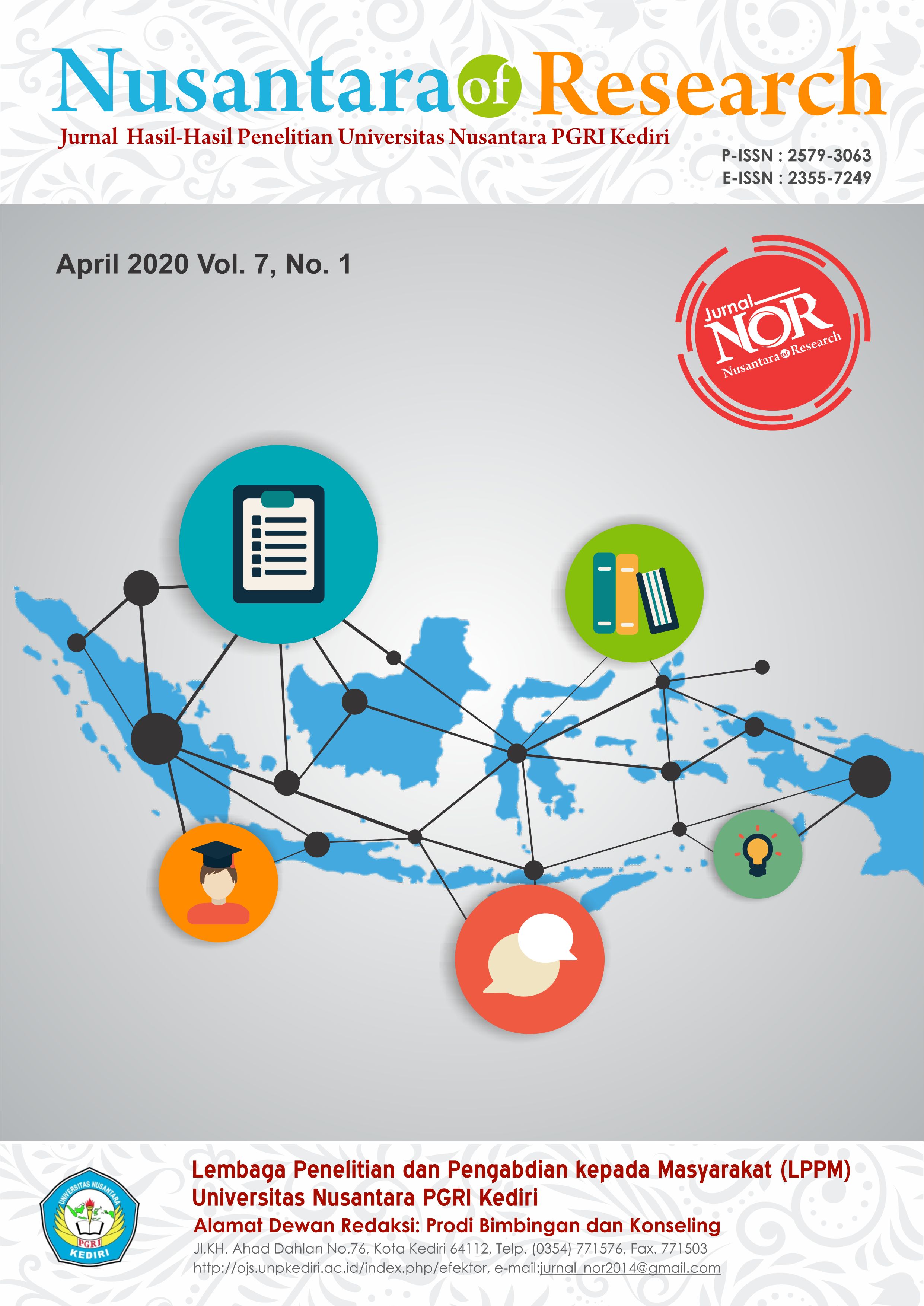Pengaruh Layanan Konseling Individu dengan Teknik Modelling untuk Meningkatkan Motivasi Belajar di SMA Negeri 1 Tambakboyo
Main Article Content
Abstract
Poor self-concept in adolescents, one of which can be seen from the lack of self-confidence. The student who has confidence will be certain in their abilities and have realistic expectations, and when expectations do not materialize, they still think positively and can receive it. Unrealistic expectations can be reduced by using techniques that can direct students to control negative cognitive behaviors and thoughts that cause low student confidence (overt-covert). Wilcoxon test analysis results show that sig. (2-tailed) 0.042 <0.05 which can be interpreted as a technique of self-instruction can increase the confidence of students of SMP Muhammadiyah 4 Singosari, with a significant level of 5%. The use of self-instruction techniques as an alternative technique to increase student confidence starts from rational procedures, self-guidance, overt external guidance, overt self-guidance, faded overt self-guidance, covert self-guidance, and homework.
Downloads
Article Details
Issue
Section
Authors who publish with this journal agree to the following terms:
- Copyright on any article is retained by the author(s).
- The author grants the journal, the right of first publication with the work simultaneously licensed under a Creative Commons Attribution License that allows others to share the work with an acknowledgment of the work’s authorship and initial publication in this journal.
- Authors are able to enter into separate, additional contractual arrangements for the non-exclusive distribution of the journal’s published version of the work (e.g., post it to an institutional repository or publish it in a book), with an acknowledgment of its initial publication in this journal.
- Authors are permitted and encouraged to post their work online (e.g., in institutional repositories or on their website) prior to and during the submission process, as it can lead to productive exchanges, as well as earlier and greater citation of published work.
- The article and any associated published material is distributed under the Creative Commons Attribution-ShareAlike 4.0 International License
How to Cite
References
Arikunto, S. (2014). Prosedur Penelitian ( SuatuPendekatanPraktik).Jakarta: RinekaCipta
Dimyati dan Mudjiono.2002. Belajar dan Pembelajaran. Jakarta:Rineka Cipta
Hidayat, Dede Rahmat & Aip Badrujaman. (2012). Penelitian Tindakan dalam Bimbingan danKonseling. Jakarta :PT. Indeks.
Sardiman, A.M. 2007. Interaksi dan Motivasi Belajar Mengajar. Jakarta: Rajawali Grafindo Persada
Sobur, Alex. 2003. Psikologi Umum. Bandung: Pustaka Setia
Sugiono. 2010. Metode Penelitian Pendidikan Kuantitatif, kualitatif dan R&D. Bandung:Alfabeta.
Melati, Fina (2011). Upaya Meningkatkan Motivasi Belajar Melalui Layanan Penguasaan Konten Dengan Teknik Permainan Pada Siswa Kelas VII RSBI Di SMP Negeri 3 Batang. Skripsi. Universitas Negeri Semarang
Nelawati, Cristina (2017). Upaya Meningkatkan Motivasi Belajar Siswa SMP Jalur Kartu Menuju Sejahtera Melalui Layanan Bimbingan Kelompok Dengan Metode Grub Dynamis Pada Siswa Kelas VIII H Dan Dapat Membuktikan Metode Grub Dynamis Dapat Meningkatkan Motivasi Belajar Siswa VIII H SMP Negeri 15 Yogyakarta. Sripsi. Universitas Sanata Darma Yogyakarta
Hayani, Tri Wirda ( 2008).Hubungan Antara Medelling Dengan Perilaku Membeli Pakaian Pada Remaja Putri.Universitas Islam Negeri Syarif Hidayatullah
Fitriati, Hikmah (2012). tentang penerapan metode modelling untuk meningkatkan hasil belajar materi membuat kerajinan dari kertas pada siswa kelas IV SD Negeri 2 Karang Jati Banjarnegara. Universitas Negeri Semarang




